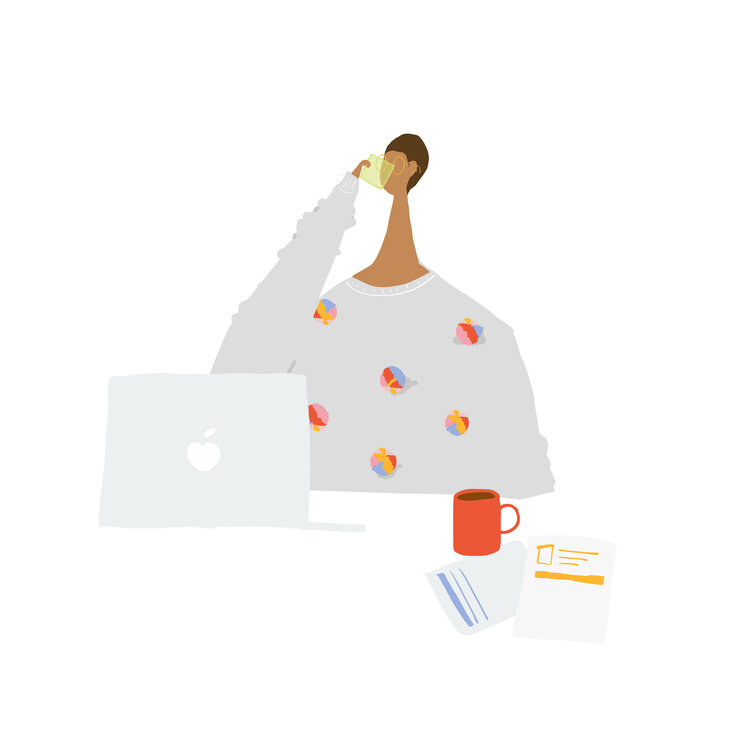Pricing. I started off pricing my services low - I did my first website for $500 - everything included. I charged a little over $200 for my first fabrication job - I lost money on that project, but I gained experience that I applied to future jobs. Pricing your services too low can undermine your work and the work of other creative professionals. Pricing your services too high can leave you hungry for work. Be realistic with your pricing and do your research. I don't charge what I charged a year ago, and I don't charge businesses the same rates as individuals.
Invoicing. Figure out how to manage cash flow (I'm still figuring this out!). I do all of my recurring invoicing once a month, for clients who consistently purchase packages from me (email campaign packages, social media management packages, etc.) I give clients a two week due date on all invoices. I charge a 10% late fee if the invoice isn't paid within that window. If the project timeline is less than a month, I typically invoice the project upfront. Likewise, if the project requires me to pay for materials, like wood, metal, printing or website hosting, I'll invoice upfront, since those type of costs are a burden to me.
I work on trade for a few of my clients. I know that isn't always sustainable, but I'll do a couple hundred dollars a month in trade for services - as long as it's a mutually beneficial trade.
Budgeting. The number one thing I've learned over the past year is to be willing to give up extraneous expenses - there are certain things, like rent, and car insurance, that I have to have. Other things, like entertainment, nights out, and shopping are things that I've had to pass at times when I'm making less monthly income. Set a budget and stick to it - and if you can't stick to it, adjust accordingly. This is advice not just for creative professionals, but for anyone trying to practice discipline in finances. For example, I tend to overspend my budget for alcohol/bars and coffee shops each month, so I sometimes have to offset that expense by spending less on restaurants. I used the budgeting app Mint - as a designer, having a beautifully designed app makes finances much more bearable. Screenshots below.
Taxes. Charge all of your clients sales tax on top of your fees. And don't touch the sales tax, pay it monthly, just to get it out of your account - even if you are only required to report sales tax quarterly or bi-annually. When I deposit a check from a client - I immediately put the sales tax portion of the payment into a separate account - this has a few benefits. 1. This money doesn't get confused with income when I am doing my personal taxes. 2. I never factor this money into my personal spending.
If you are looking to save a little money, file your taxes yourself using Tax Act - the annual fee is only $75 for sole proprietors and independent contractors.
Consulting. Get a second look at your finances. In the past I've met with small business consultants, and last week I met with Barraclough & Associates, a Santa Fe based accounting firm to get answers to more specific questions that I had. And because I knew I wanted to write about financial literacy for creative professionals, I asked for general advice to share with y'all.
Kelsi: What are three simple practices you recommend in relation to finances?
Barraclough: Clarity. Figure out what your bottom line is - that's the most important number. Action, constant action. Follow up with people, it doesn't matter how they respond or how you think they will respond. Stay true to your brand. Success comes from clear, clear, clear focus. Believe in yourself and charge for everything.
Hope this helps! Let me know what other concepts I should explore - even if they aren't specifically design related.



